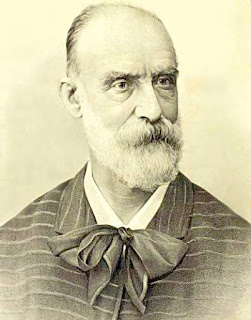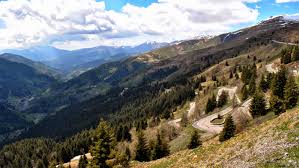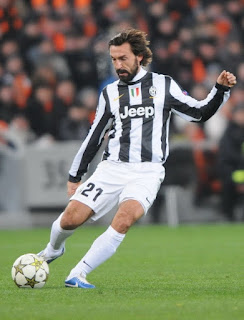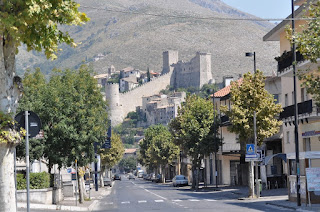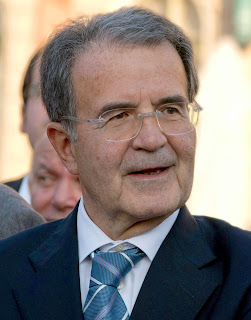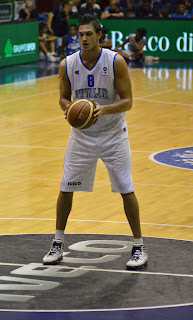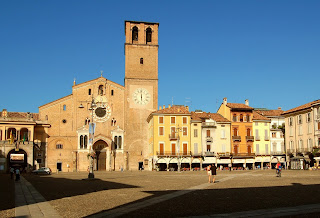Entrepreneur turned Ferrari into world’s most famous marque
 |
| Enzo Ferrari at the 1967 Italian GP in Monza |
Enzo Ferrari, the founder of the Scuderia Ferrari motor
racing team and later the Ferrari sports car factory, died on this day in 1988
at the age of 90.
Known widely as Il Commendatore, he passed away in Maranello, a town in Emilia-Romagna a few
kilometres from Modena, where he had a house, the Villa Rosa, literally
opposite Ferrari’s headquarters, where he continued to supervise operations
almost to his death. He had reportedly been suffering from kidney disease.
Since the first Ferrari racing car was built in 1947 and the
Scuderia Ferrari team’s famous prancing stallion symbol has been carried to
victory in 228 Formula One Grand Prix races and brought home 15 drivers’
championships and 16 manufacturers’ championship.
Always an exclusive marque, the number of Ferraris produced
for road use since the company began to build cars for sale rather than simply
to race is in excess of 150,000.
Born Enzo Anselmo Ferrari in 1898 in Modena, he attended his
first motor race in Bologna at the age of 10 and developed a passion for fast
cars rivalled only by his love of opera.
He endured tragedy in 1916 when both his brother and his
father died in a flu epidemic and was fortunate to survive another epidemic two
years later, when he became seriously ill while serving with the army.
 |
| A young Enzo Ferrari pictured at the wheel of a racing car |
In 1919, he moved to Milan to work as a test driver, joining Alfa Romeo the following year. It was
after winning a race in 1923 that he met the parents of First World War flying ace
Francesco Baracca, who suggested the young driver use the emblem that decorated
their son's plane for good luck – a prancing horse.
In 1929, he formed the Scuderia Ferrari motor racing team,
which was essentially the racing division of Alfa Romeo, although that
arrangement came to an end in 1937 – six years after he retired as a driver –
when Alfa claimed back control of its racing operation.
Soon after leaving Alfa Romeo, Enzo Ferrari opened a
workshop in Modena but the outbreak of the Second World War stalled its
progress, and the first Ferrari racing car – the 125S - was not completed until
1947.
The marque scored its first win in the same year, at the
Rome Grand Prix, and went on to notch victories at the Mille Miglia in 1948,
the 24 Hours of Le Mans in 1949 and the British Grand Prix in 1951.
In 1952 and 1953, Ferrari driver Alberto Ascari won the newly launched Formula One world championship. Around this time, the company also began producing cars for
road use, with rich and famous clients soon queuing up for the chance to own
one as its reputation grew as the ultimate automotive status symbol.
 |
| The Ferrari museum at Maranello has a reconstruction of Enzo's office with a waxwork of 'il Commendatore' at his desk |
Enzo suffered more personal tragedy in 1956 with the death
of his son Dino from muscular dystrophy, during a period in which six of his
drivers were killed and one of his cars went out of control in the 1957 Mille
Miglia, killing nine spectators. Afterwards he became increasingly reclusive.
Financial issues prompted him to sell 50 per cent of Ferrari
to Fiat in 1969 and he formally resigned as president of the company in 1977,
although he remained involved with day-to-day running.
The Ferrari name lives on as a public company with its legal
headquarters in Amsterdam. Enzo’s second son, Piero, owns 10 per cent of the
company.
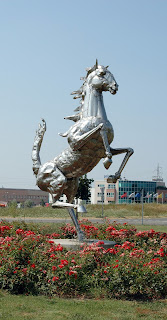 |
| Ferrari's famous 'prancing horse' at the Maranello factory |
Travel tip:
Maranello, a town of around 17,000 inhabitants 18 km (11
miles) from Modena, has been the location for the Ferrari factory since the
early 1940s, when Enzo Ferrari transferred operations from Modena, due to
bombing during the Second World War. The public museum Museo Ferrari, which
displays sports and racing cars and trophies, is also in Maranello. In another
sport, Maranello is also the starting point of the annual Italian Marathon,
which finishes in nearby Carpi.
Travel tip:
Modena should be high up the list of any visitor’s must-see
places in northern Italy. One of the country’s major centres for food – the home
of balsamic vinegar and tortellini among other things – it has a large number
of top-quality restaurants among its narrow streets. The ideal base for
visiting Ferrari’s headquarters at Maranello, it also has a beautiful Romanesque
cathedral and is the birthplace of the great tenor Luciano Pavarotti, whose
former home in Stradello Nava, about 8km (5 miles) from the centre of the city is
now a museum.
